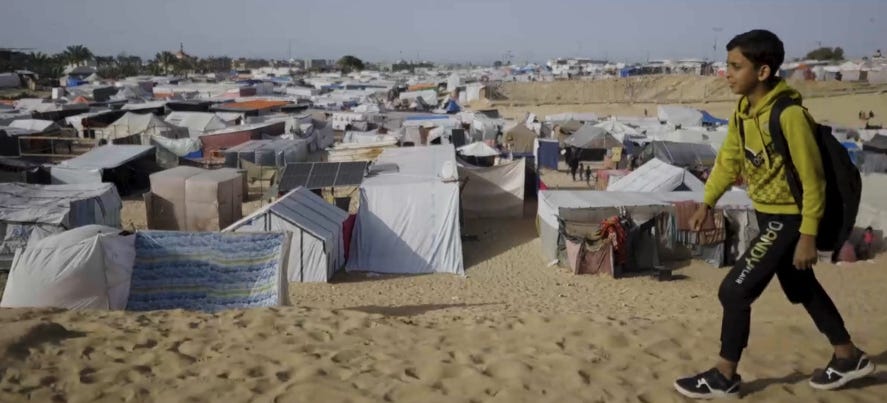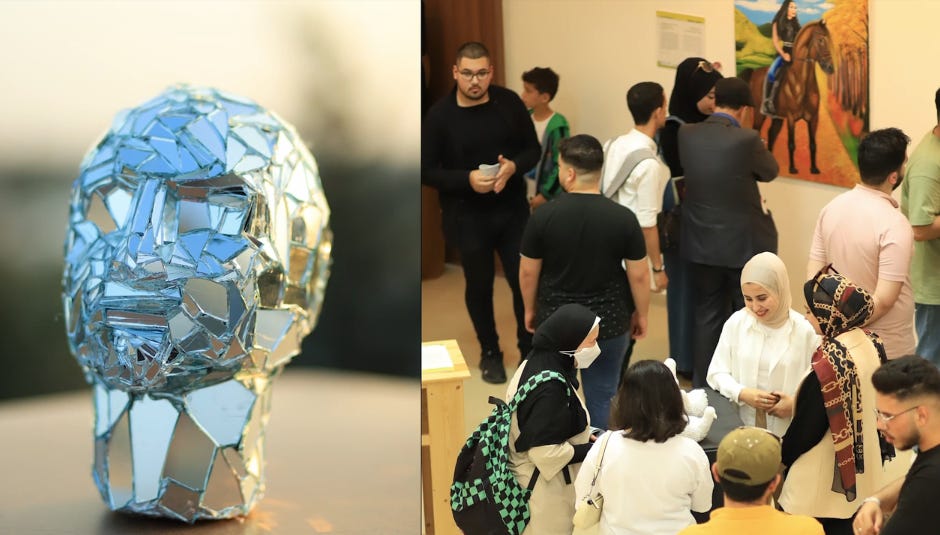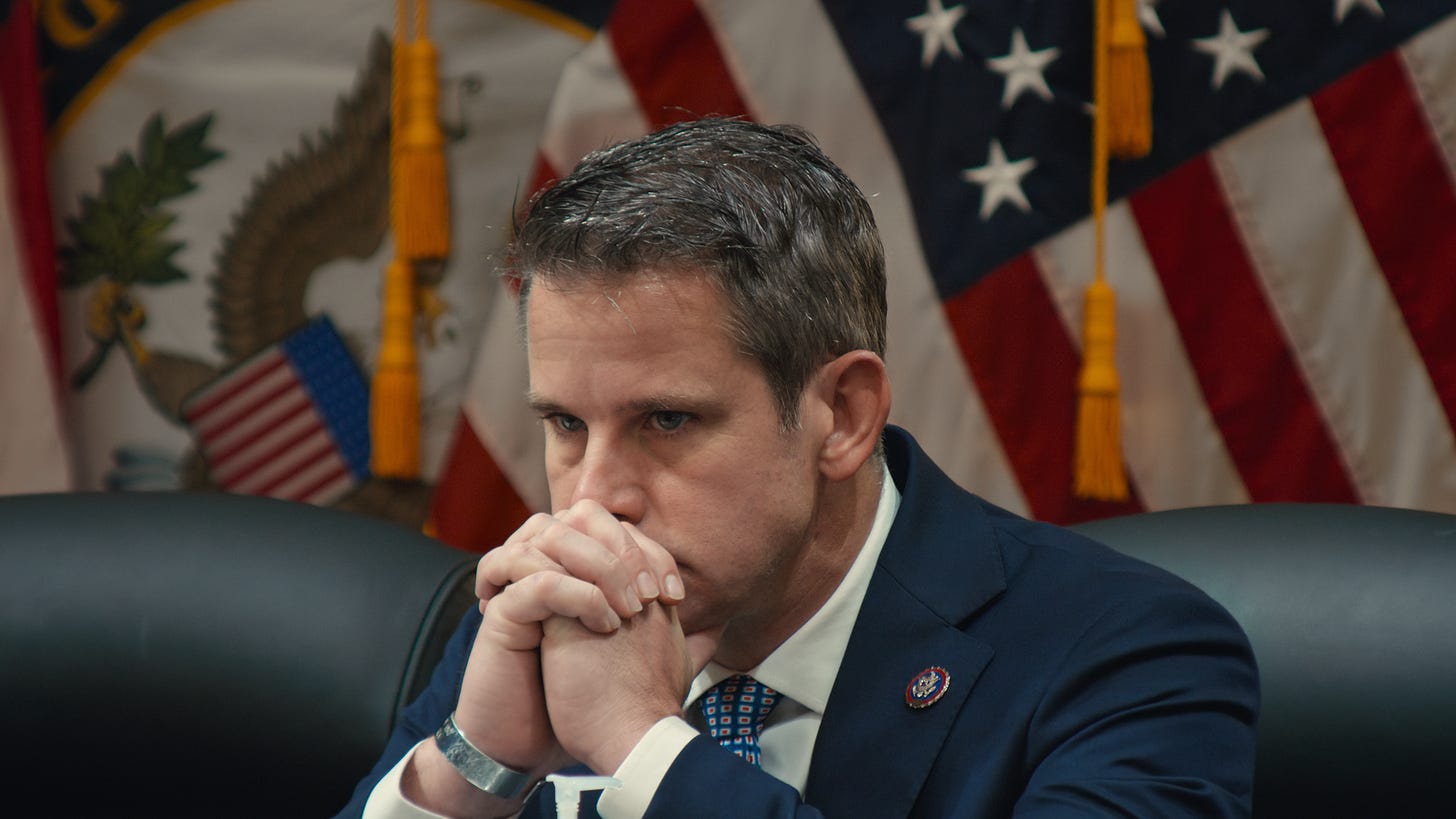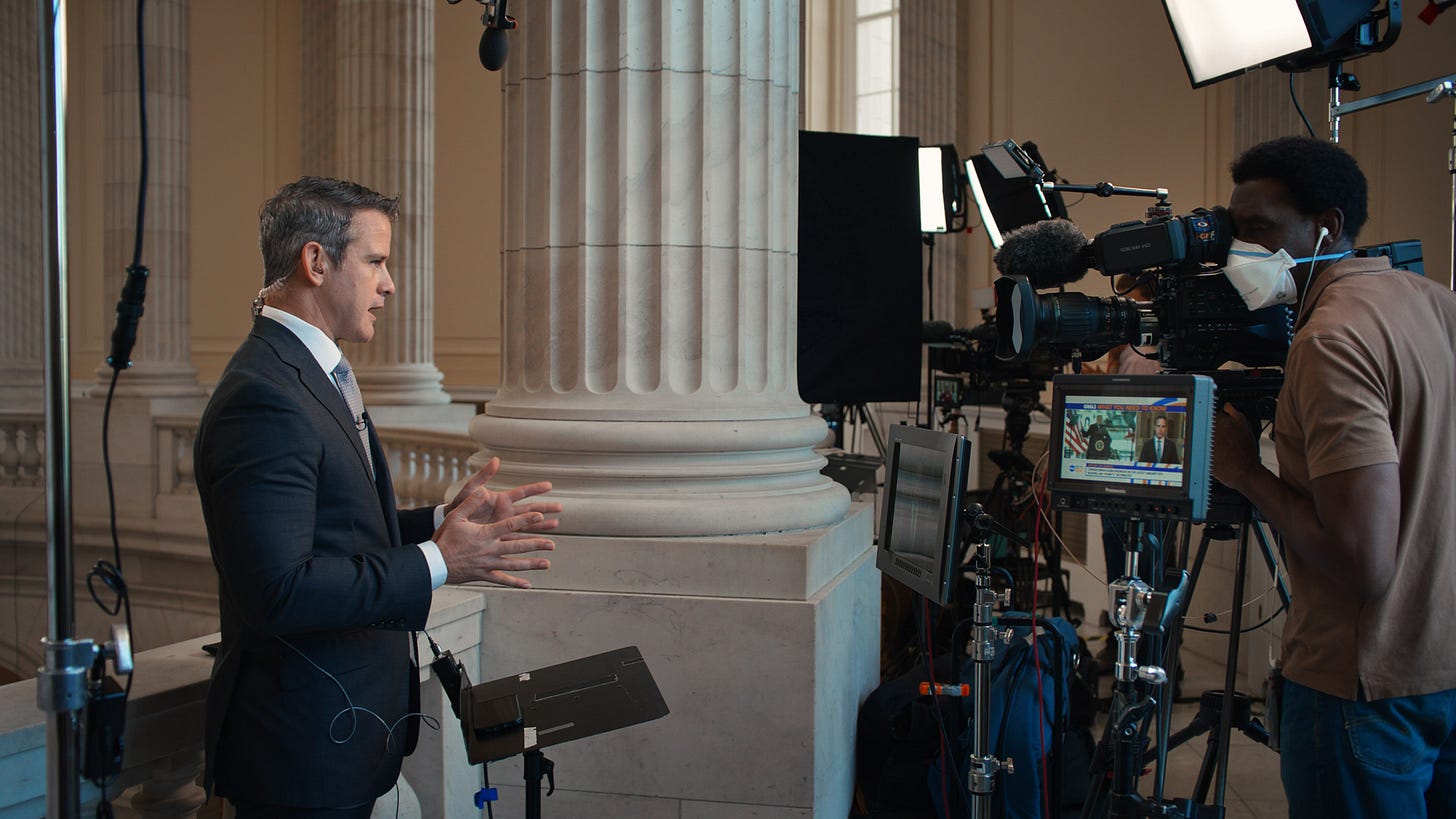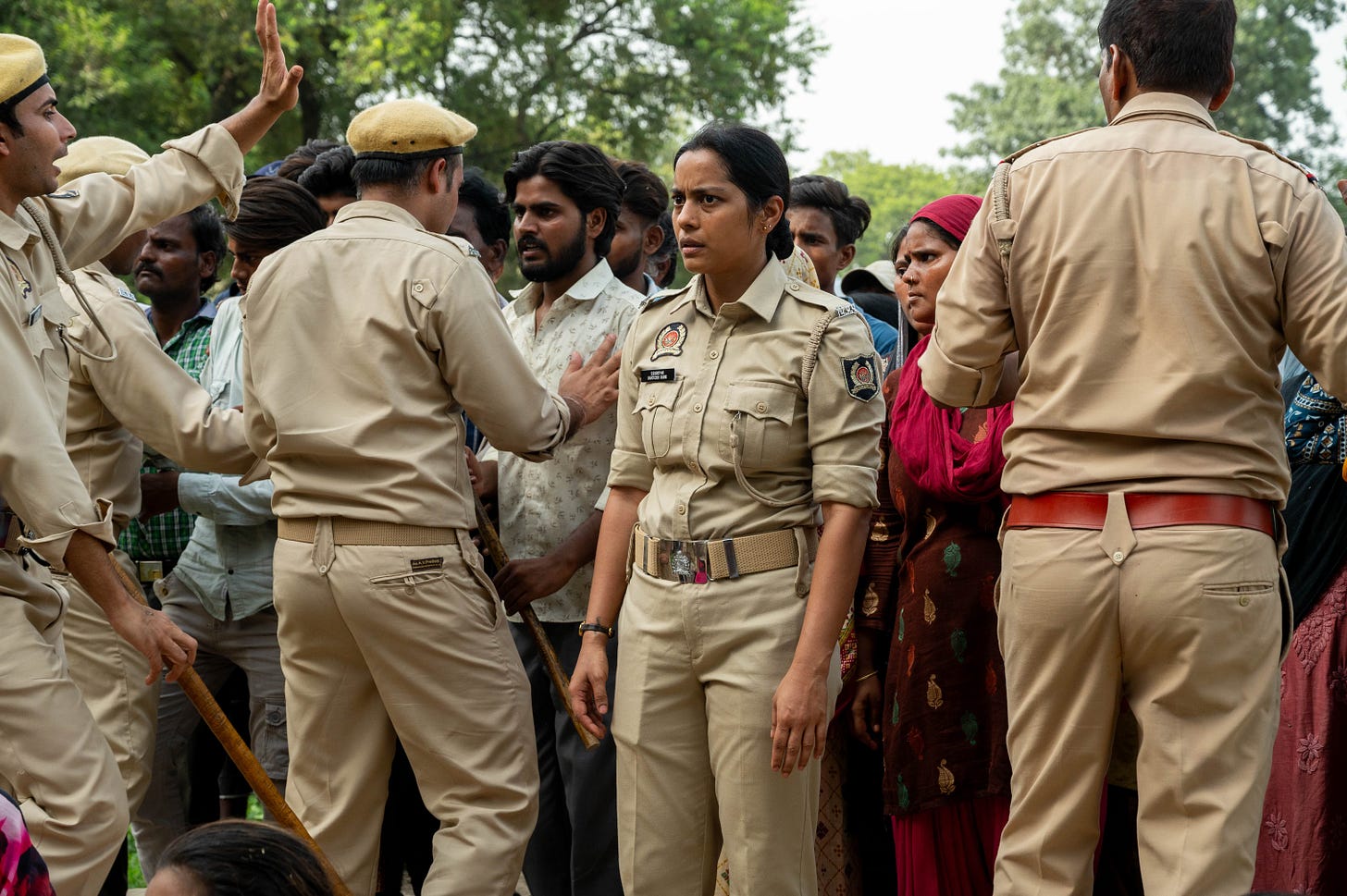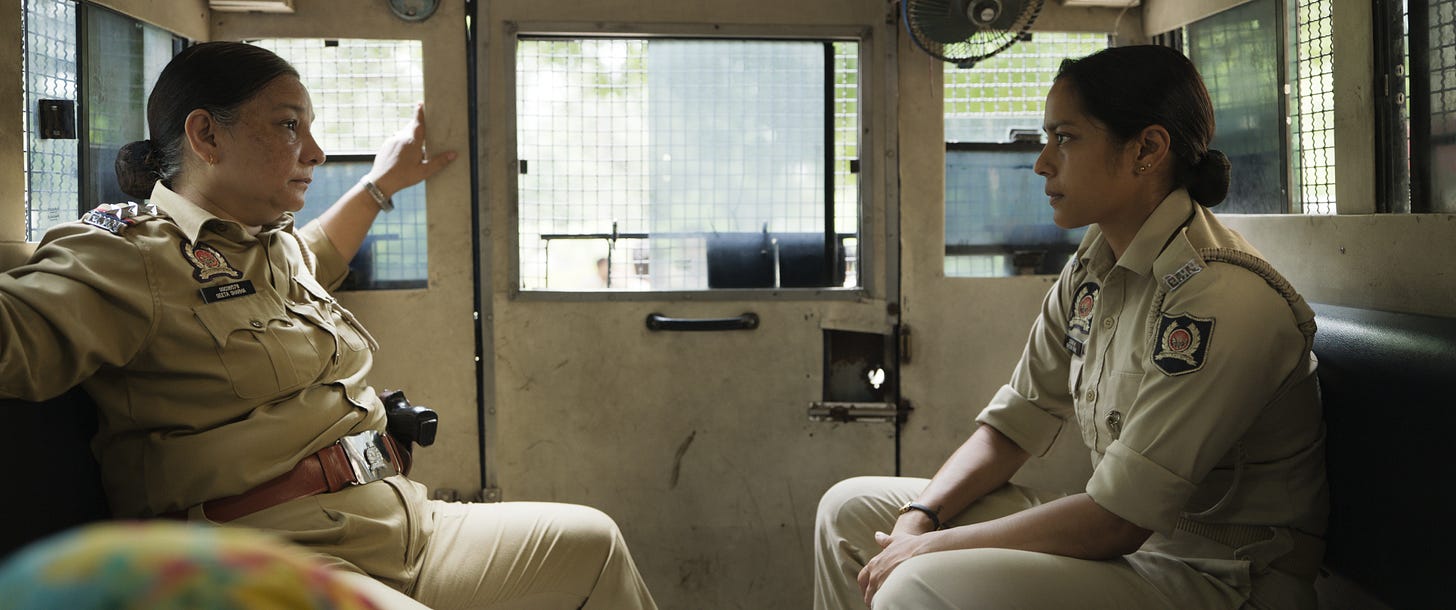We’re still settling into the new year, but there are already new movies! The first new releases of 2025 speak directly to current events around the world, each exploring a different form of resistance: a collection of short films from Gaza, a documentary about the last of the anti-Trump Republicans, and a political cop thriller set in India. Hope everyone has had a decent start to the year.
From Ground Zero
Opens January 3 in select theaters nationwide; see playdates here.
During last year’s Academy Awards, the Oscar for Best International Feature was given to The Zone of Interest. After accepting the statue from Dwayne “The Rock” Johnson and Bad Bunny, the film’s director, Jonathan Glazer, delivered his now infamous speech. Drawing a connection between the malign ignorance of the Holocaust’s perpetrators — the subject of his film — and the occupation of Palestine by the descendants of some of its survivors, he posed a question to the audience, both in Hollywood and around the world: “Whether the victims of October 7 in Israel or the ongoing attack on Gaza, all the victims of this dehumanization — how do we resist?” One answer comes in the form of From Ground Zero, a collection of short films from Gaza, made in the wake of Israel’s brutal retaliation campaign. Creating and experiencing art are fundamentally unique to the human experience; as such, this project is in itself a resistance to dehumanization.
Each of the 22 films in this omnibus was directed by a different Palestinian filmmaker, providing multiple perspectives on the day-to-day reality in Gaza. Most of the shorts are either documentaries or neorealist vignettes, with a smattering of more experimental ventures: one is partially animated, another uses puppets to tell its story. All are attempting to make sense of the unfolding destruction and violence. Common motifs emerge as these stories accumulate. One is the incessant hum of drones: in Muhammad Al Sharif’s entry, “No Signal,” we hear them buzz around the sky while a man frantically searches for his brother, who is trapped underneath the rubble of his apartment building. Throughout this contained narrative, which mostly unfolds in one uninterrupted take, we hear rifle fire and explosions just a little too close for comfort. That’s about the closest any of these films get to depicting an active combat situation, but the noise emitted by the drones invade many of their soundtracks, literalizing the psychological toll of omnipresent conflict. Other recurring threads include the struggle to access basic necessities, the deaths of family members, the war’s impact on children, and the generational cycles of conflict and displacement in Palestine.
Two of the most devastating films in this collection are about artists whose dreams have now been deferred, possibly forever forsaken. “Sorry Cinema” is a personal essay by Ahmed Hassouna, who had been active in Palestine’s scrappy film industry. But in order to survive his new reality, he literally walks away from his cinematic aspirations. The subject of Neda’a Abu Hasna’s documentary, “Out of Frame,” is an art student named Ranin Al Zeriei, who gives us a tour of her ruined flat. A heavy layer of dust now coats her work, including a sculpture of a pearl-encrusted dove. It was titled “Living Peace,” intended as a symbol of hope. But Al Zeriei laments that “there’s no [longer a] possibility of a culture of peace. The peace we have now is a murderous peace.” Hassouna and Al Zeriei’s artistic careers are now on hold but sometimes the art itself is truncated: another film in this collection suddenly stops, when its director gets news that her brother and his children were killed in a bombing and is unable to finish her work.
Typical of anthologies like From Ground Zero, the quality of the films can vary widely, and they are presented in a haphazard order. But given the circumstances under which they have been made, the shaky production value of the individual films is more than forgivable. (And if you don’t find a particular short to be compelling, you only have to sit through it for a few minutes.) One can only wish that all 22 directors had access to the resources and equipment they needed to fully realize their visions, though they make the most of what is available. Despite scant access to laptops and electricity, some of the directors were able to edit the films themselves; in other cases, raw footage was assembled by an outside team. These films were all shot on location, a grim fact when considering that the locations are refugee camps and levelled city blocks.
It is unclear exactly when these shorts were produced, though as far as I can tell, they were made throughout the first half of 2024. The ambiguous timeline unfortunately highlights how little the overall situation has changed since then1. No matter the high level developments, the ordinary people of Gaza continue to suffer and die in what is now alleged to be a genocide, perpetrated by Israel with the tacit support of the United States and other Western powers. It’s been nearly a year since this project was launched, but it has lost none of its urgency.
(Since I write my own newsletter, I can go outside the bounds of a conventional film review and now break the fourth wall, so to speak. I want to be clear: if you choose to watch this film, please do not do so out of a misplaced sense that watching a movie equates to activism, akin to sharing an appealingly designed infographic on Instagram. Neither is writing a little movie review, for that matter. If you want to see this film, do so because you want to see good cinema that was made in the most hostile of conditions.)
Despite the grim context and content of From Ground Zero, it affirms that to make art is to express one’s inherent humanity. Even the most hopeless stories in this collection demonstrate resilience against dehumanization — and a refusal to be silenced. It makes the rare glimmers of positivity all the more precious. In the short film “NO,” journalist Hana Eleiwa records a group of young musicians, who have composed a song that is definitely hopeful, in the face of all the destruction around them. “I reject despair,” one sings. The others reply, in unison: “Tomorrow, we will forget the crises / They will pass, and we will see beautiful smiles again.” If that’s not radical optimism, I don’t know what is.
At the last Oscars ceremony, ten months ago, Glazer was the only person to speak about the atrocities in Gaza, and he caught equal amounts of blowback and support. I bring up the Oscars because From Ground Zero is Palestine’s submission for this year’s International Feature Film award. From a field of 85 eligible submissions, it made the shortlist of 15 films, five of which will be nominated. I think it’s unlikely for that to happen — let alone win the award — so I can only hope that at least one of the filmmakers who do step up to that stage in March will follow Glazer’s lead and decry the dehumanization and destruction that has gone on in Palestine for far too long, and go further to call for a ceasefire.
The Last Republican
Opens January 3 at the Film Forum in NY.
Independent films typically embark on a monthslong tour of festivals and acquisition markets in the hopes of securing distribution. While From Ground Zero has only gained in urgency since its renegade premiere at Cannes last May, sometimes that long and winding road deflates a film’s power. This is the case for The Last Republican, a documentary that follows Republican Representative Adam Kinzinger during his last year in Congress. The staunch conservative — who Donald Trump once deemed “a handsome guy” — is now an apostate within his party, after voting to impeach the former President in the aftermath of the January 6 insurrection. The hook is that it was directed by a far-left Hollywood filmmaker by the name of Steve Pink, who happens to have made what the rightwing Congressman calls a “cinematic masterpiece:” Hot Tub Time Machine.
This being a film about a conservative congressman made by a liberal filmmaker, it’s no surprise that The Last Republican is straight down the middle, in form and function. Pink keeps things engaging without deflecting from the seriousness of the events depicted. Much of The Last Republican chronicles Kinzinger’s work as one of just two Republicans on the House Select Committee on the January 6 Attack. Political junkies won’t really learn anything new, but it humanizes one of the last vocally anti-Trump Republicans to serve in Congress. The better moments of the film highlight the frequent indignities of working on Capitol Hill: the cramped offices, the bad gifts from other Members of Congress. (Senator Dick Durbin’s Christmas present to the outgoing Congressman is a small bag of popcorn — “at least give me a tin!” complains the embittered recipient.) Director and subject occasionally trade barbs — Pink calls out Kinzinger’s ardent anti-abortion position, Kinzinger jokingly calls his interlocutor a communist. (“Steve Pinko” was right there.)
Kinzinger even takes a rhetorical spin in the Hot Tub Time Machine, theorizing how, in the aftermath of the impeachment vote, the ten Republican Representatives who voted in favor of it could have taken control of the party by gatekeeping corporate donations. But no such effort was made. In the wake of a power vacuum, Kevin McCarthy flew down to Mar-a-Lago, and the rest is history. Only two of those ten dissidents remain in office.
The big flaw with The Last Republican is that it ends with Kinzinger leaving office in January 2023. In the final interview scene, he states that he wants to fight the creeping cynicism that he felt during those last months in office, when Trump solidified his hold over the Republican party. It’s a bittersweet but optimistic note that’s soured by the fact that Kinzinger’s efforts were in vain. Trump begins his second term in just a few weeks. It would have been great if Pink had re-opened his film in November to follow up with his subject. That would have been a fascinating coda, but perhaps an entirely different movie. Four years after the insurrection, America seems to have forgotten it.
⭑⭑⭑☆☆
Santosh
Opened December 27 at the IFC Center in NY; limited expansion starting January 3.
This India-set cop thriller follows the titular Santosh (Shahana Goswami), a rookie police officer who inherited her deceased husband’s position through a process called “compassionate appointment.” She is sent to a rural town in Northern India, where the male cops treat their job more like a social club than public service. The rookie is tasked with investigating the rape and murder of a young Dalit girl, under the watchful eye of Detective Sharma (Sunita Rajwar), one of the few high-ranking women in the national force. They quickly identify a suspect, a Muslim teenager who is too easily found, and the ensuing interrogation could euphemistically be described as “enhanced.” The naturalistic style from writer-director Sandhya Suri is austere to a fault. The film touches on a number of hot-button issues in India, including police corruption and the entrenched caste system, and Suri smartly fits all of these pieces together. But the film is rather dry until a tense final act.
The highlight here is Rajwar’s performance as the experienced Detective Sharma, who had spent so much time trying to reform a corrupt, male-dominated institution until realizing she was now a part of it. It’s a vision of the younger Santosh’s future, should she choose to accept it. Sharma’s moral compass has warped, but Rajwar humanizes her character by revealing the strain that she’s under, showing the cracks in her cool façade.
Santosh is currently a contender for the International Feature Film Oscar, having made the shortlist of fifteen potential nominees. But despite having been shot in and around Lucknow, in Northern India, the film was submitted to the United Kingdom. (It was mainly financed by the BBC and the British Film Institute.) Each country can only select one film. Despite having more strategically sound options in this film and All We Imagine As Light, which both had received acclaim at Cannes, India’s myopic committee selected a more mainstream title, and it failed to make the shortlist. It speaks to the need for the Academy to reform this category, because an institution that wants to highlight a more positive side of its country would never choose something like Santosh to represent it.
⭑⭑⭑½☆
On the day before publication, 54 more Palestinians were killed by Israeli airstrikes. Some were Hamas militants, but others were women and children living in a humanitarian zone.






